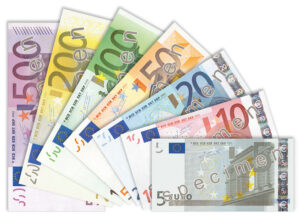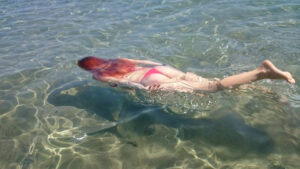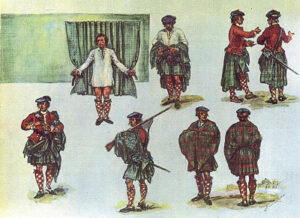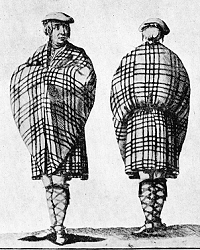I don’t have the kit with me at the moment but since I replenished the contents just three days ago, I should be able to recall most of the contents.
Some medical kit lists can get very exotic! Keep in mind the basis of a good kit is aspirin and plasters. Make sure you have enough of each and most bases are covered.
The kit itself travels in a bag with two zipped compartments. The bag itself is kept dry by being carried in a “tuk-lok” freezer bag. This bag must be a good decade old but shows no signs of deterioration, nor have any of the seams opened. Freezer bags like this are worth looking into for stowing your gear.

The outer pocket of the pouch has a pair of metal haemostats, one straight, one curved.
I have never used these to clamp an artery, and hope that I never need to. They are handy items to have for other purposes, however.
I have used them like pliers in the past or to clamp things together while I attempt repairs.
With them is a pair of needle-tipped forceps, still in its plastic wrapper. This can be used for finer work than is possible with the tweezers on my penknife. The forceps can be used to remove splinters or ticks. Thankfully I have never had to do the latter.
The final item in this pocket is a small bag of safety pins. These can be used to secure bandages (or broken flies!). They can also be used to drain blisters (flame the point for a second first).
The main pocket contains a number of items, many of them individually bagged to keep them dry or counter leakage.
One of the most useful items here is a bag of aspirin and similar pain-killers. Aspirin has multiple effects, such as reducing fevers as well as being an analgesic, so is worth carrying if you are not allergic. Some of the other painkillers contain paracetamol and caffeine.
Equally useful is a bag of plasters of assorted sizes. Some alcohol wipes are worth including with these.
There is a small bag of Imodium (loperamide) capsules for the more unpleasant kinds of stomach upsets. Also in the bag is a piece of the original box detailing the dosage and contents.
In addition to the plasters there is a roll of bandage. I added this after I hurt my ankle on a trip.
Travelling often involves carrying a rucksac or heavy load. You may wear different footwear to that you are accustomed to and the ground may be uncertain, even within a town. (Historic cobbled streets can sometimes prove treacherous!)
In short, there is an increased change of ankle injury and a roll of bandage can prove to be useful support if you do injure your ankle.
A recent addition is a roll of sticking plaster tape. This may be used for minor cuts to the fingers, or taping fingers or toes together if a break is suspected.
Given that survival and travel activities may involve edged tools, a roll of zinc oxide elasticated plaster, or “sport tape” is a handy thing to have.
Another recent addition is a measured scoop for making single glasses (200 ml) of oral rehydration solution. This scoop serves as a pull-tag for the main zipper.

My medical kit also includes a lice comb, added when I was contemplating a trip to India.
I’ve been bitten by a few cat fleas over the years but have never had lice. The comb is still a sensible precaution, however.
To use it, wet your hair to lubricate the passage of the comb and wipe the comb clean after each stroke. The comb pulls adult lice from the hair, usually breaking their legs. It will probably miss infant lice and the eggs (nits), so you will have to wet and comb at least once a day for several weeks to ensure the insects are gone.
The pouch also includes a bottle of Oil of Cloves and one of Oil of Olbas.
I’ve contracted colds on a couple of trips. Such things can spread through a hostel pretty rapidly. Olbas oil is well worth its weight, and can be used for other purposes too.
Clove oil is useful for toothaches.
The final container is a 50 ml plastic centrifuge tube of TCP.
It took me several attempts to find a container that closed sufficiently.
The first ones I used caused the kit to smell of TCP, demonstrating that they were not airtight.
I have removed the label from a glass bottle of TCP and taped it to the tube so I have the dilution information.
Applications include cuts, grazes, bites, stings, boils, spots, pimples, sore throats and mouth ulcers.
I prefer TCP liquid to ointment, since the ointment sometimes marks clothing and the liquid can also be used as a gargle if you have a sore throat. (Also, the ointment is no longer available).
The liquid can be used neat but for many applications it is better diluted, which makes your supply last longer.
TCP is great for mosquito bites, but if you do not have your kit nearby acidic solutions such as vinegar and lemon juice can provide relief. 
The final item of the basic kit tends to ride outside of the pouch but within the plastic bag. This is a small tin of Vaseline. These are sold for chapped lips, but Vaseline has a number of other uses and can be applied to cuts, grazes, bites and chaffing. The little tin is easily refilled from larger containers.
These are the contents of my medical kit, but not the limit of my medical items.
Insect repellent and sun-cream are usually carried where they are readily available.
There are some additional plasters and painkillers in my emergency kit.
My washing kit contains standard bathroom soap which is one of the most useful antiseptics that you can carry.
I also carry a supply of blood pressure medication and the other varied tablets a man of my advancing years seems to need.
I have a tendency to migraine attacks so I intend to add extra diclofenac to my medical kits.
I might add some tampons to the kit. As well as the obvious use, they can be used with the plasters or bandage to staunch freely bleeding wounds.
If you are involved in activities such as hunting, then some field dressings and the knowledge of how to use them is advised. Carry them where they are readily accessible.















